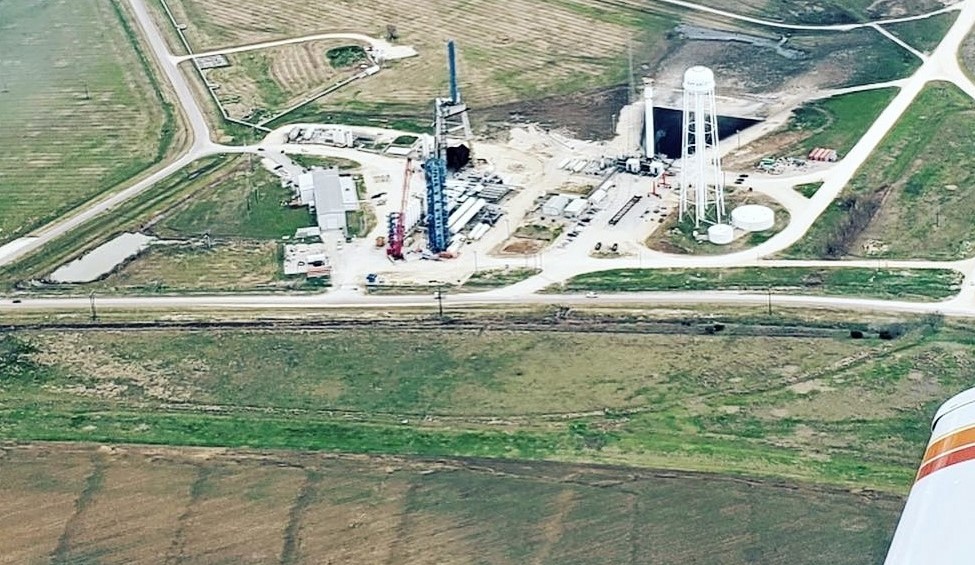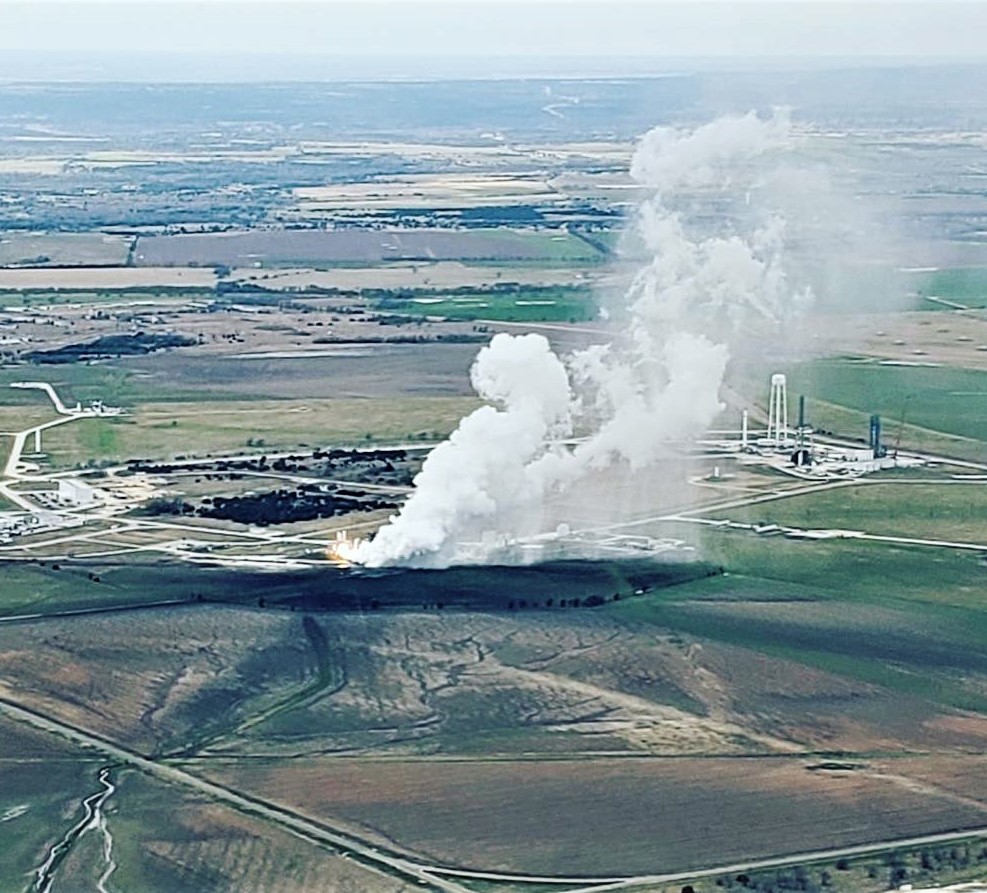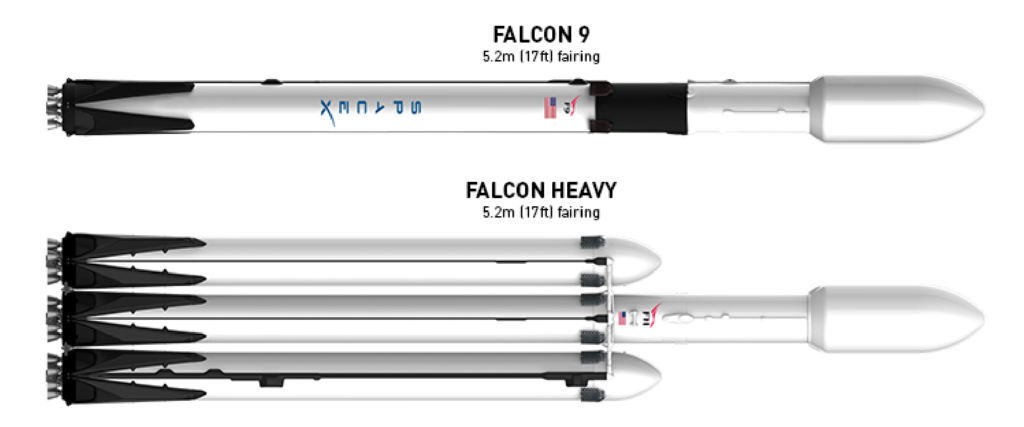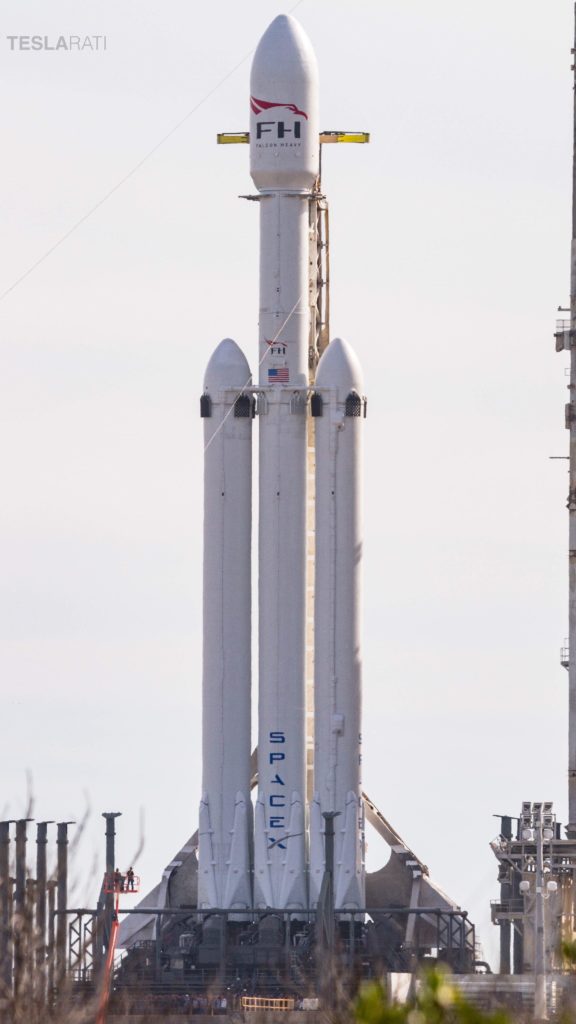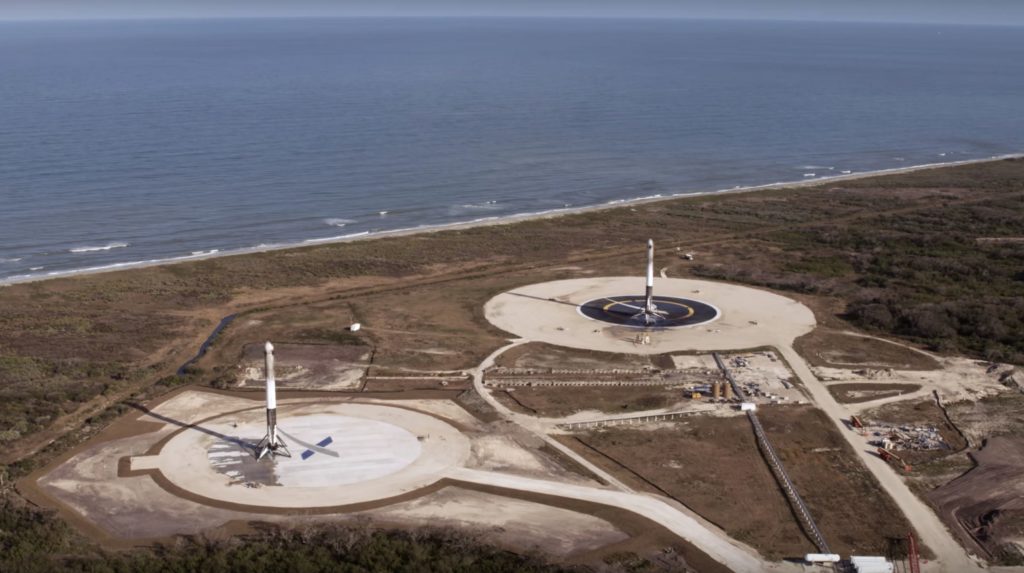
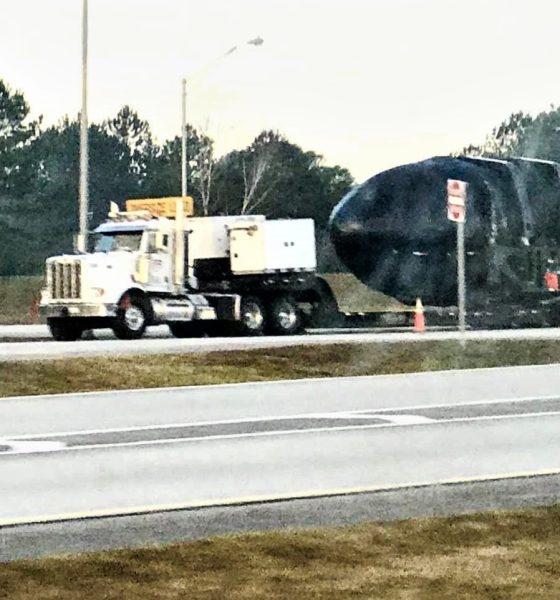
News
SpaceX’s second Falcon Heavy booster arrives in Florida as launch #2 closes in
SpaceX’s second Falcon Heavy side booster has made its way from Texas to Florida after completing a successful static fire acceptance test at the company’s McGregor complex, paving the way for the third and final booster – currently vertical on McGregor’s test stand – to complete its own round of tests and head East.
Once the third and most important booster – known as the center core – arrives at SpaceX’s Florida launch facilities, all three of the next Falcon Heavy’s boosters will be ready to head into the integration stage, culminating in an integrated static fire prior to the second launch ever of SpaceX’s flagship super-heavy-lift rocket.

A Texas pilot happened to fly by SpaceX’s McGregor facilities on January 11th, catching a live glimpse of a Merlin Vacuum (MVac) or second stage static fire test, as well a Falcon booster – perhaps Falcon Heavy’s next center core – vertical on the facility’s booster static fire stand. While it has not yet been visually confirmed as the next Falcon Heavy center core, a booster traveling through the Waco, Texas area to McGregor was spotted with protuberances that are not normally seen on regular Falcon 9 boosters and happened to be in the right place for FH-specific hardware.
- A booster – likely the next Falcon Heavy center core – was vertical at McGregor’s S1 static fire stand. (Instagram /u/tcryguy)
- An MVac or Falcon 9 S2 performs a static fire at McGregor. (Instagram /u/tcryguy)
There is also a case to be made that – per the fact that the first two side boosters have been built, shipped, tested, and delivered back-to-back – SpaceX chose to consecutively manufacture all hardware needed for the second Falcon Heavy instead of producing one or a few single-stick Falcon 9 boosters in between, which the appearance of a center core-like rocket in Texas certainly helps corroborate. While Falcon Heavy side boosters are effectively just Falcon 9 boosters with a few additional attachments and nose cones, currently scheduling indicates that SpaceX may attempt to rapidly turn all three Falcon Heavy Flight 2 boosters around perhaps just 30-60 days after their first launch. Otherwise, once the rocket’s 2019 launches have been completed, both side boosters can be converted back into Falcon 9 boosters and thus reenter SpaceX’s active fleet of flight-proven rockets.
Falcon Heavy’s center core, however, is dramatically different than a regular Falcon 9 booster, owing to the fact that it needs to essentially support triple the thrust and mechanical stresses as single-stick launches. The rocket’s design works to improve payload performance by using the two side cores to boost the center core and leave it with far more propellant left over than Falcon 9 would during a comparable launch profile, roughly equivalent to a three-person bike where only two people are pedaling hard. During a Falcon Heavy launch, side boosters thus separate a solid 30-60 seconds before the center core parts ways with the upper stage and payload.
- A diagram from a recent SpaceX document offers an idea of what Falcon Heavy Block 5 will look like. (SpaceX)
- The first Falcon Heavy, seen here fully integrated aside from its payload fairing. (SpaceX)
- Falcon Heavy just prior to its launch debut, February 2018. (Tom Cross)
- SpaceX’s Falcon Heavy prepares for the huge rocket’s inaugural launch. (SpaceX)
- LZ-1 and LZ-2, circa February 2018. (SpaceX)
Thanks to its significant differences, it’s highly unlikely – if not impossible – for a Falcon Heavy center core to launch a regular Falcon 9 mission. As such, once Falcon Heavy’s 2019 launches are completed, the center core will most likely be processed, refurbished, and then stored until the next Falcon Heavy payload is ready to go, at which point Falcon 9 boosters would be converted into Heavy side cores. Given that the Block 5 upgrade is designed to allow Falcon boosters to perform as many as 10 launches with minimal to no refurbishment and 100+ with regular repairs and maintenance, it’s entirely possible that a single Falcon Heavy center core could theoretically support all possible future launches of the rocket.
In reality, customers like the USAF and NASA will probably request new hardware for foreseeable Falcon Heavy launches, most of which would likely be extremely expensive flagship satellites (AFSPC-52) or interplanetary spacecraft (Europa Clipper).
Fans of @SpaceX will be interested to note that the government is now taking very seriously the possibility of flying Clipper on the Falcon Heavy.
— Eric Berger (@SciGuySpace) December 3, 2018
Falcon Heavy’s next two launches are planned as early as March (a large communications satellite called Arabsat 6A) and April (an experimental USAF launch called STP-2 with two dozen separate payloads). With two side boosters already in Florida, those dates are now serious possibilities, and the center core’s arrival will be the telltale sign that Falcon Heavy’s second launch ever is imminent.

News
Tesla is not sparing any expense in ensuring the Cybercab is safe
Images shared by the longtime watcher showed 16 Cybercab prototypes parked near Giga Texas’ dedicated crash test facility.

The Tesla Cybercab could very well be the safest taxi on the road when it is released and deployed for public use. This was, at least, hinted at by the intensive safety tests that Tesla seems to be putting the autonomous two-seater through at its Giga Texas crash test facility.
Intensive crash tests
As per recent images from longtime Giga Texas watcher and drone operator Joe Tegtmeyer, Tesla seems to be very busy crash testing Cybercab units. Images shared by the longtime watcher showed 16 Cybercab prototypes parked near Giga Texas’ dedicated crash test facility just before the holidays.
Tegtmeyer’s aerial photos showed the prototypes clustered outside the factory’s testing building. Some uncovered Cybercabs showed notable damage and one even had its airbags engaged. With Cybercab production expected to start in about 130 days, it appears that Tesla is very busy ensuring that its autonomous two-seater ends up becoming the safest taxi on public roads.
Prioritizing safety
With no human driver controls, the Cybercab demands exceptional active and passive safety systems to protect occupants in any scenario. Considering Tesla’s reputation, it is then understandable that the company seems to be sparing no expense in ensuring that the Cybercab is as safe as possible.
Tesla’s focus on safety was recently highlighted when the Cybertruck achieved a Top Safety Pick+ rating from the Insurance Institute for Highway Safety (IIHS). This was a notable victory for the Cybertruck as critics have long claimed that the vehicle will be one of, if not the, most unsafe truck on the road due to its appearance. The vehicle’s Top Safety Pick+ rating, if any, simply proved that Tesla never neglects to make its cars as safe as possible, and that definitely includes the Cybercab.
Elon Musk
Tesla’s Elon Musk gives timeframe for FSD’s release in UAE
Provided that Musk’s timeframe proves accurate, FSD would be able to start saturating the Middle East, starting with the UAE, next year.
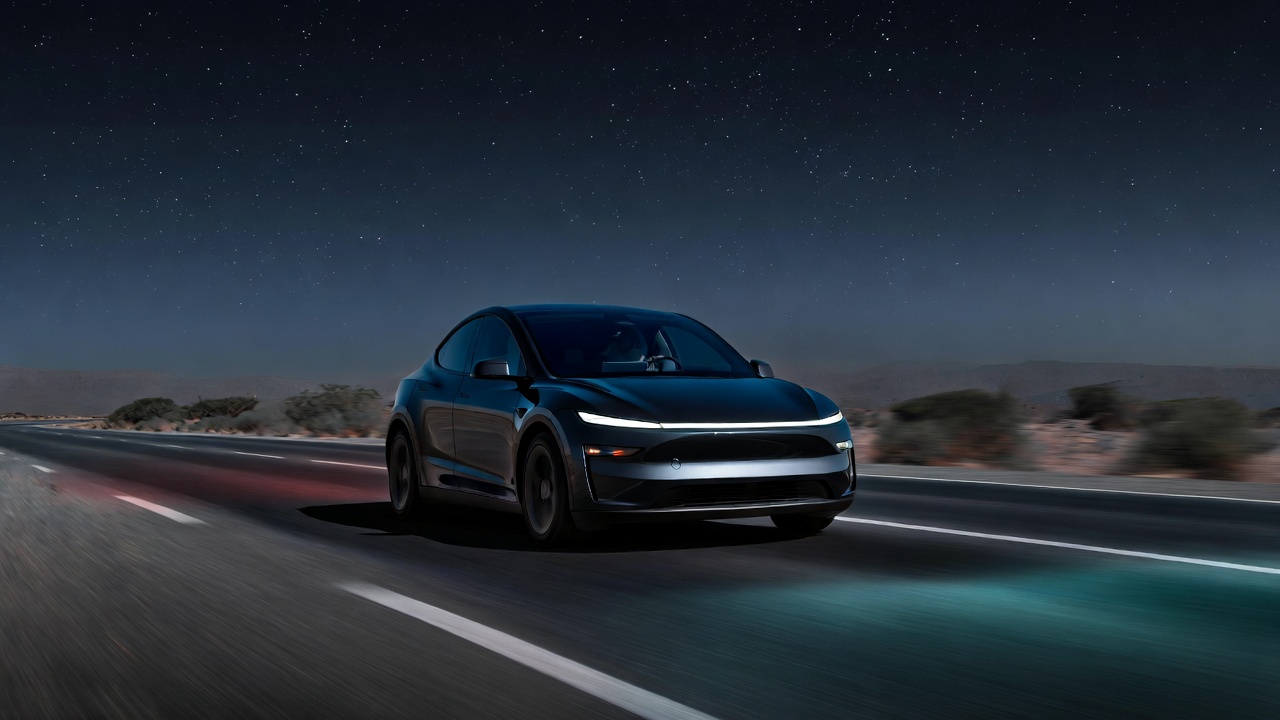
Tesla CEO Elon Musk stated on Monday that Full Self-Driving (Supervised) could launch in the United Arab Emirates (UAE) as soon as January 2026.
Provided that Musk’s timeframe proves accurate, FSD would be able to start saturating the Middle East, starting with the UAE, next year.
Musk’s estimate
In a post on X, UAE-based political analyst Ahmed Sharif Al Amiri asked Musk when FSD would arrive in the country, quoting an earlier post where the CEO encouraged users to try out FSD for themselves. Musk responded directly to the analyst’s inquiry.
“Hopefully, next month,” Musk wrote. The exchange attracted a lot of attention, with numerous X users sharing their excitement at the idea of FSD being brought to a new country. FSD (Supervised), after all, would likely allow hands-off highway driving, urban navigation, and parking under driver oversight in traffic-heavy cities such as Dubai and Abu Dhabi.
Musk’s comments about FSD’s arrival in the UAE were posted following his visit to the Middle Eastern country. Over the weekend, images were shared online of Musk meeting with UAE Defense Minister, Deputy Prime Minister, and Dubai Crown Prince HH Sheikh Hamdan bin Mohammed. Musk also posted a supportive message about the country, posting “UAE rocks!” on X.
FSD recognition
FSD has been getting quite a lot of support from foreign media outlets. FSD (Supervised) earned high marks from Germany’s largest car magazine, Auto Bild, during a test in Berlin’s challenging urban environment. The demonstration highlighted the system’s ability to handle dense traffic, construction sites, pedestrian crossings, and narrow streets with smooth, confident decision-making.
Journalist Robin Hornig was particularly struck by FSD’s superior perception and tireless attention, stating: “Tesla FSD Supervised sees more than I do. It doesn’t get distracted and never gets tired. I like to think I’m a good driver, but I can’t match this system’s all-around vision. It’s at its best when both work together: my experience and the Tesla’s constant attention.” Only one intervention was needed when the system misread a route, showcasing its maturity while relying on vision-only sensors and over-the-air learning.
News
Tesla quietly flexes FSD’s reliability amid Waymo blackout in San Francisco
“Tesla Robotaxis were unaffected by the SF power outage,” Musk wrote in his post.

Tesla highlighted its Full Self-Driving (Supervised) system’s robustness this week by sharing dashcam footage of a vehicle in FSD navigating pitch-black San Francisco streets during the city’s widespread power outage.
While Waymo’s robotaxis stalled and caused traffic jams, Tesla’s vision-only approach kept operating seamlessly without remote intervention. Elon Musk amplified the clip, highlighting the contrast between the two systems.
Tesla FSD handles total darkness
The @Tesla_AI account posted a video from a Model Y operating on FSD during San Francisco’s blackout. As could be seen in the video, streetlights, traffic signals, and surrounding illumination were completely out, but the vehicle drove confidently and cautiously, just like a proficient human driver.
Musk reposted the clip, adding context to reports of Waymo vehicles struggling in the same conditions. “Tesla Robotaxis were unaffected by the SF power outage,” Musk wrote in his post.
Musk and the Tesla AI team’s posts highlight the idea that FSD operates a lot like any experienced human driver. Since the system does not rely on a variety of sensors and a complicated symphony of factors, vehicles could technically navigate challenging circumstances as they emerge. This definitely seemed to be the case in San Francisco.
Waymo’s blackout struggles
Waymo faced scrutiny after multiple self-driving Jaguar I-PACE taxis stopped functioning during the blackout, blocking lanes, causing traffic jams, and requiring manual retrieval. Videos shared during the power outage showed fleets of Waymo vehicles just stopping in the middle of the road, seemingly confused about what to do when the lights go out.
In a comment, Waymo stated that its vehicles treat nonfunctional signals as four-way stops, but “the sheer scale of the outage led to instances where vehicles remained stationary longer than usual to confirm the state of the affected intersections. This contributed to traffic friction during the height of the congestion.”
A company spokesperson also shared some thoughts about the incidents. “Yesterday’s power outage was a widespread event that caused gridlock across San Francisco, with non-functioning traffic signals and transit disruptions. While the failure of the utility infrastructure was significant, we are committed to ensuring our technology adjusts to traffic flow during such events,” the Waymo spokesperson stated, adding that it is “focused on rapidly integrating the lessons learned from this event, and are committed to earning and maintaining the trust of the communities we serve every day.”
